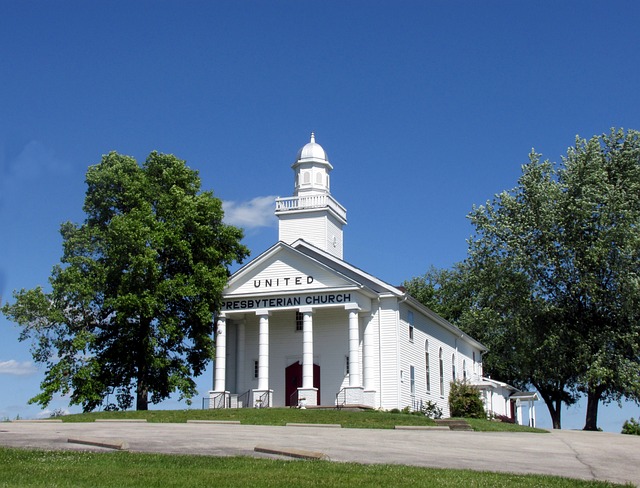Presbyterians generally do not practice full immersion baptism as a standard practice.
Table of Contents
The History of Full Immersion in Presbyterianism
Do Presbyterians do full immersion? It’s a question that has been asked by many people curious about the practices of this particular Christian denomination. To answer this question, we need to delve into the history of full immersion in Presbyterianism.
Presbyterianism, as a branch of Protestant Christianity, traces its roots back to the 16th century Reformation. The movement was led by John Calvin, a French theologian, and his teachings heavily influenced the development of Presbyterianism. One of the key aspects of Calvin’s theology was the belief in the sovereignty of God and the importance of the sacraments.
In Presbyterianism, the two sacraments recognized are baptism and the Lord’s Supper. Baptism, in particular, holds a significant place in the faith. It is seen as a means of grace, a visible sign of God’s covenant with his people. But how is baptism performed in Presbyterian churches? Is full immersion practiced?
The answer to that question is not a straightforward one. While some Presbyterian churches do practice full immersion, it is not the norm for the denomination as a whole. The majority of Presbyterian churches practice what is known as sprinkling or pouring, also known as affusion. This method involves the minister or pastor pouring or sprinkling water on the person being baptized.
The practice of sprinkling or pouring in Presbyterianism can be traced back to the early days of the Reformation. During this time, there was a shift away from the Catholic practice of infant baptism by immersion. The Reformers believed that baptism was a means of grace and that it was not necessary for the entire body to be submerged in water for the sacrament to be valid.
Over time, this practice became more widely accepted within Presbyterianism. The use of sprinkling or pouring was seen as a practical and efficient way to administer baptism, especially in situations where large numbers of people were being baptized. It also aligned with the belief that the sacrament was primarily a spiritual act, rather than a physical one.
However, it is important to note that there are Presbyterian churches that do practice full immersion. These churches often have a more conservative or traditional approach to worship and adhere closely to the practices of the early church. They believe that full immersion is the most accurate representation of the biblical accounts of baptism and that it should be practiced accordingly.
In recent years, there has been some debate within the Presbyterian denomination about the mode of baptism. Some argue for a return to full immersion, citing biblical and historical evidence. Others maintain that sprinkling or pouring is a valid and meaningful practice that should continue to be embraced.
Ultimately, the mode of baptism in Presbyterianism is a matter of individual church practice and interpretation. While the majority of Presbyterian churches practice sprinkling or pouring, there are those that do practice full immersion. Regardless of the method used, the sacrament of baptism holds deep significance for Presbyterians, symbolizing God’s grace and the believer’s initiation into the Christian faith.
So, do Presbyterians do full immersion? The answer is both yes and no. While the majority of Presbyterian churches practice sprinkling or pouring, there are those that do practice full immersion. The mode of baptism is ultimately a matter of individual church practice and interpretation, but the sacrament itself holds deep meaning and significance for Presbyterians.
Understanding the Theological Perspectives on Full Immersion among Presbyterians

Do Presbyterians do full immersion? It’s a question that many people have when it comes to understanding the theological perspectives on full immersion among Presbyterians. The answer, as with many theological questions, is not a simple yes or no. It’s important to delve into the history and beliefs of the Presbyterian Church to gain a better understanding of their stance on baptism.
First, let’s take a look at what full immersion means. Full immersion baptism is a practice where the person being baptized is fully submerged in water. This is seen as a symbolic representation of dying to the old self and being raised to new life in Christ. Many Christian denominations, such as Baptists and some Pentecostals, practice full immersion baptism as their preferred method.
In the case of Presbyterians, the practice of baptism is rooted in their theological beliefs. Presbyterians believe in the sacraments, which are visible signs of God’s grace. Baptism is one of these sacraments, along with the Lord’s Supper. The Presbyterian Church recognizes that there are different ways to administer baptism, including sprinkling, pouring, and immersion.
The Book of Order, which is the constitution of the Presbyterian Church (U.S.A.), states that “baptism is appropriately administered by pouring, sprinkling, or immersion.” This means that Presbyterians have the freedom to choose the method of baptism that aligns with their personal beliefs and the practices of their particular congregation.
While full immersion is not the preferred method of baptism among Presbyterians, it is still practiced by some individuals and congregations within the Presbyterian Church. This is because the Presbyterian Church values the diversity of theological perspectives within its membership. As long as the essential elements of baptism are present, such as the use of water and the invocation of the Triune God, the method of baptism is considered valid.
It’s important to note that the Presbyterian Church places a greater emphasis on the meaning and significance of baptism rather than the method of administration. Baptism is seen as a visible sign of God’s grace and a means of initiation into the community of faith. It is a symbol of the believer’s union with Christ and their participation in his death and resurrection.
Presbyterians believe that baptism is a one-time event that does not need to be repeated. It is a sign of God’s covenant with his people and a reminder of their identity as members of the body of Christ. The Presbyterian Church also practices infant baptism, where infants are baptized as a sign of God’s grace and their inclusion in the covenant community. This practice is based on the belief that God’s grace is extended to all, regardless of age or ability to understand.
In conclusion, while full immersion is not the preferred method of baptism among Presbyterians, it is still practiced by some individuals and congregations within the Presbyterian Church. The Presbyterian Church values the diversity of theological perspectives and allows for different methods of baptism, including pouring, sprinkling, and immersion. The focus is on the meaning and significance of baptism as a visible sign of God’s grace and a means of initiation into the community of faith.
Exploring the Practical Implications of Full Immersion in Presbyterian Worship
Do Presbyterians do full immersion? It’s a question that many people have when it comes to understanding the practices and beliefs of this particular Christian denomination. While full immersion is commonly associated with Baptists and other evangelical groups, it’s not as prevalent in Presbyterian worship. However, that doesn’t mean that it’s completely absent from their practices. Let’s explore the practical implications of full immersion in Presbyterian worship.
Firstly, it’s important to understand that Presbyterians, like many other Christian denominations, believe in the sacrament of baptism. Baptism is seen as a symbolic act that represents the washing away of sins and the initiation into the Christian faith. In Presbyterian worship, baptism is typically performed by sprinkling or pouring water over the head of the person being baptized. This method is known as “affusion” or “aspersion.”
The choice to use sprinkling or pouring instead of full immersion is rooted in the theological beliefs of Presbyterians. They believe that the mode of baptism is not as important as the meaning behind it. For Presbyterians, baptism is a sign and seal of God’s covenant with his people, and it is the work of the Holy Spirit that brings about the spiritual transformation, not the physical act of immersion.
However, it’s worth noting that there are some Presbyterian churches that do practice full immersion baptism. These churches are often referred to as “Reformed Baptists” or “Reformed Presbyterians.” They hold to a more literal interpretation of the Bible and believe that full immersion is the proper mode of baptism. These churches are in the minority within the Presbyterian denomination, but they do exist.
So, what are the practical implications of full immersion in Presbyterian worship? One of the main considerations is the logistics of performing full immersion baptisms. Unlike sprinkling or pouring, full immersion requires a larger body of water, such as a baptismal pool or a natural body of water like a river or lake. This can present challenges for churches that don’t have access to these resources or have limited space in their worship facilities.
Another practical consideration is the physicality of full immersion. Immersing someone fully in water requires more effort and coordination compared to sprinkling or pouring. It may also be more uncomfortable for individuals who are being baptized, especially if they have mobility issues or health concerns. These factors need to be taken into account when deciding on the mode of baptism in Presbyterian worship.
Ultimately, the choice of whether to practice full immersion or not in Presbyterian worship is a matter of theological interpretation and practical considerations. While full immersion is not the norm in Presbyterian churches, there are exceptions within the denomination. The important thing to remember is that the mode of baptism is secondary to the spiritual significance and meaning behind the sacrament. Whether it’s through sprinkling, pouring, or full immersion, baptism serves as a visible sign of God’s grace and the believer’s commitment to the Christian faith.
Debunking Misconceptions about Full Immersion in Presbyterianism
Do Presbyterians do full immersion? This is a question that often comes up when discussing the practices of different Christian denominations. Many people have misconceptions about what Presbyterians believe and how they practice their faith. In this article, we will debunk some of these misconceptions and shed light on the truth about full immersion in Presbyterianism.
First and foremost, it is important to understand that Presbyterianism is a branch of Protestant Christianity. Presbyterians believe in the Holy Trinity, the divinity of Jesus Christ, and the authority of the Bible. However, when it comes to the practice of baptism, there are some differences among different Presbyterian churches.
One common misconception is that all Presbyterians practice infant baptism exclusively. While it is true that many Presbyterian churches do baptize infants, there are also Presbyterians who believe in adult baptism. The decision to baptize infants or adults is ultimately left up to the individual church and its governing body.
Now, let’s address the question of full immersion. Full immersion baptism involves completely submerging a person in water, symbolizing their spiritual cleansing and rebirth. Some Christian denominations, such as Baptists, practice full immersion as their preferred method of baptism. However, this is not the case for all Presbyterians.
Presbyterians generally practice baptism by sprinkling or pouring water over the person’s head. This method is known as affusion or aspersion. The belief behind this practice is that it symbolizes the pouring out of the Holy Spirit upon the individual being baptized. It is seen as a visible sign of God’s grace and the person’s initiation into the Christian community.
It is important to note that the mode of baptism, whether it be full immersion or sprinkling, is not the central focus for Presbyterians. The emphasis is placed on the meaning and significance of baptism itself. It is seen as a sacrament, a visible sign of God’s grace and a means of grace for the individual being baptized.
Another misconception is that Presbyterians do not take baptism seriously because they do not practice full immersion. This is simply not true. Presbyterians believe that baptism is a sacred act and a lifelong commitment to follow Christ. It is a public declaration of faith and a commitment to live a life of discipleship.
Presbyterians also believe in the importance of community and the role of the church in nurturing and supporting individuals in their faith journey. Baptism is seen as an entry into this community of believers, where individuals are welcomed, loved, and supported in their spiritual growth.
In conclusion, while it is true that Presbyterians generally do not practice full immersion baptism, this does not diminish the significance or seriousness of their beliefs about baptism. Presbyterians believe in the power of baptism as a means of grace and a visible sign of God’s love and forgiveness. The mode of baptism, whether it be full immersion or sprinkling, is secondary to the meaning and significance of the sacrament itself. So, the next time someone asks if Presbyterians do full immersion, you can confidently debunk that misconception and share the truth about Presbyterian beliefs and practices.
Conclusion
Presbyterians do not typically practice full immersion baptism.


